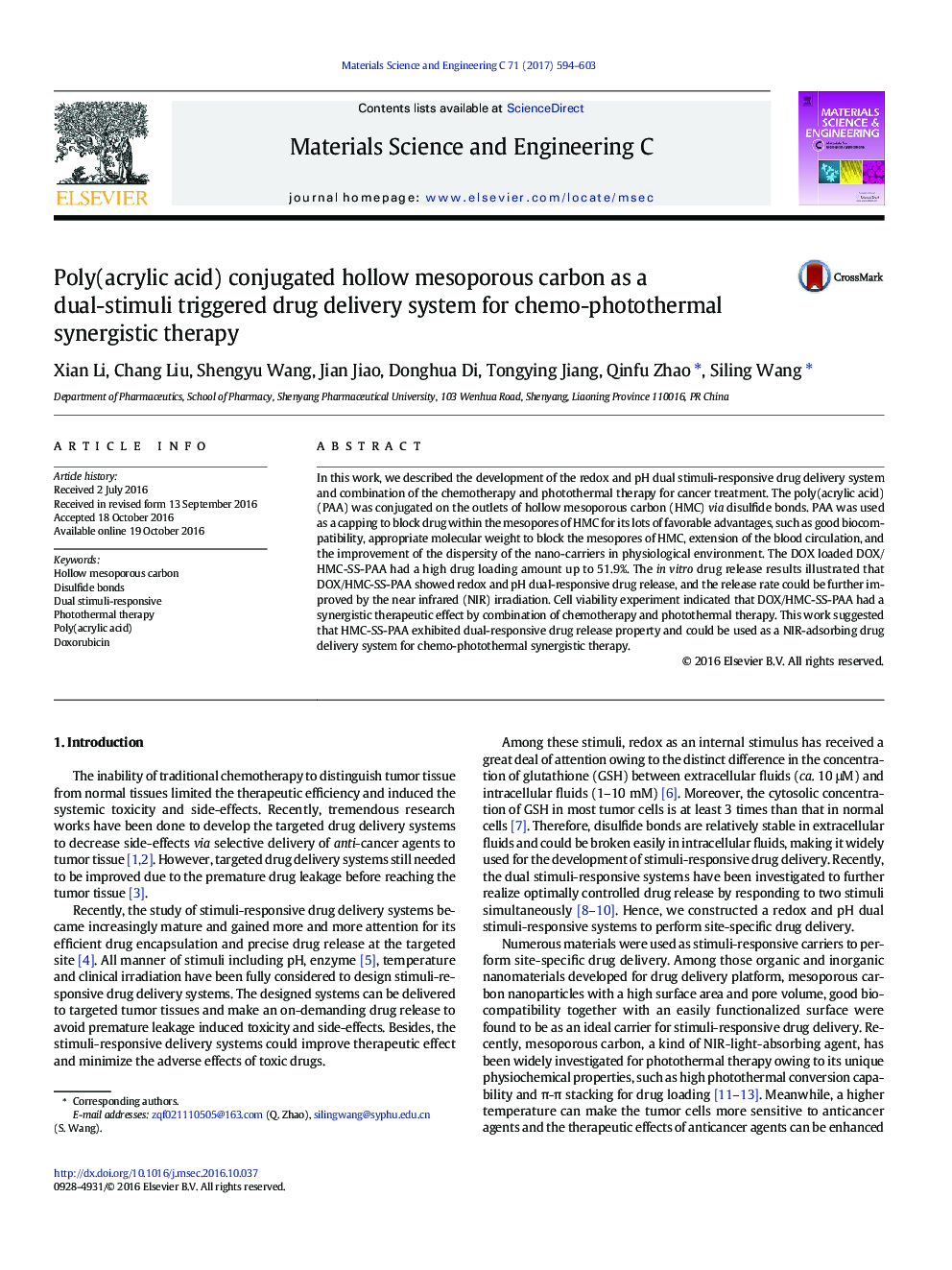| Article ID | Journal | Published Year | Pages | File Type |
|---|---|---|---|---|
| 5434665 | Materials Science and Engineering: C | 2017 | 10 Pages |
â¢Poly(acrylic acid) was grafted on hollow mesoporous carbon (HMC) via disulfide bonds.â¢The grafted PAA could increase the biocompatibility and stability of HMC.â¢The DOX-loaded DOX/HMC-SS-PAA had a high drug loading efficiency up to 51.9%.â¢DOX/HMC-SS-PAA showed redox/pH dual-responsive and NIR-triggered drug release.â¢DOX/HMC-SS-PAA showed a chemo/photothermal synergistic therapy effect.
In this work, we described the development of the redox and pH dual stimuli-responsive drug delivery system and combination of the chemotherapy and photothermal therapy for cancer treatment. The poly(acrylic acid) (PAA) was conjugated on the outlets of hollow mesoporous carbon (HMC) via disulfide bonds. PAA was used as a capping to block drug within the mesopores of HMC for its lots of favorable advantages, such as good biocompatibility, appropriate molecular weight to block the mesopores of HMC, extension of the blood circulation, and the improvement of the dispersity of the nano-carriers in physiological environment. The DOX loaded DOX/HMC-SS-PAA had a high drug loading amount up to 51.9%. The in vitro drug release results illustrated that DOX/HMC-SS-PAA showed redox and pH dual-responsive drug release, and the release rate could be further improved by the near infrared (NIR) irradiation. Cell viability experiment indicated that DOX/HMC-SS-PAA had a synergistic therapeutic effect by combination of chemotherapy and photothermal therapy. This work suggested that HMC-SS-PAA exhibited dual-responsive drug release property and could be used as a NIR-adsorbing drug delivery system for chemo-photothermal synergistic therapy.
Graphical abstractDownload high-res image (105KB)Download full-size image
